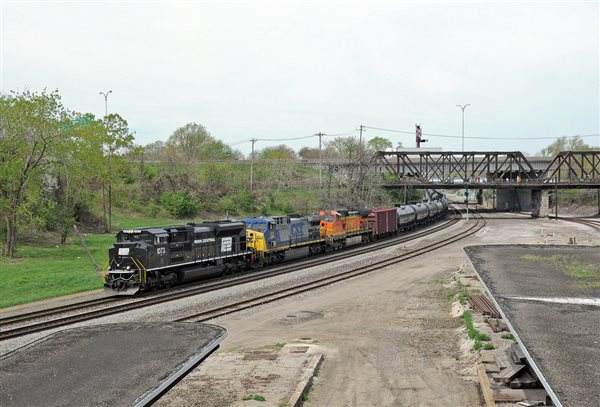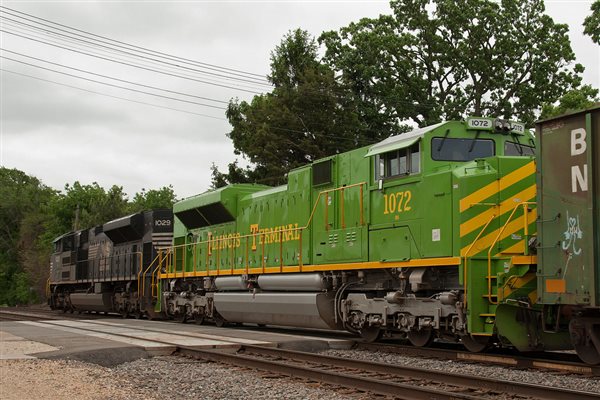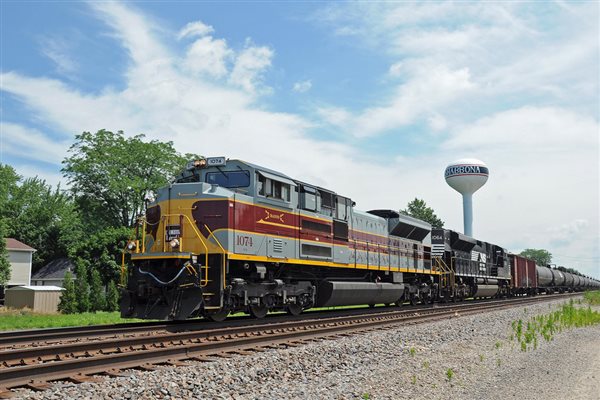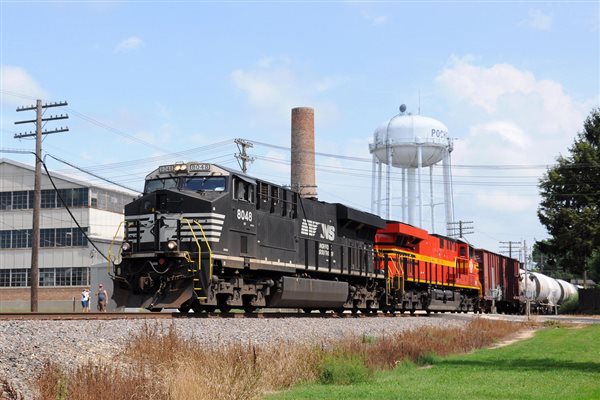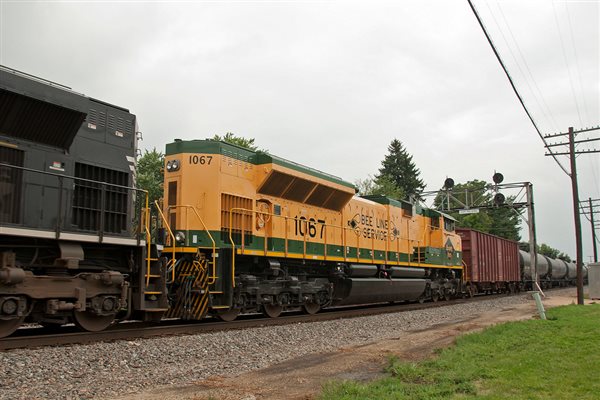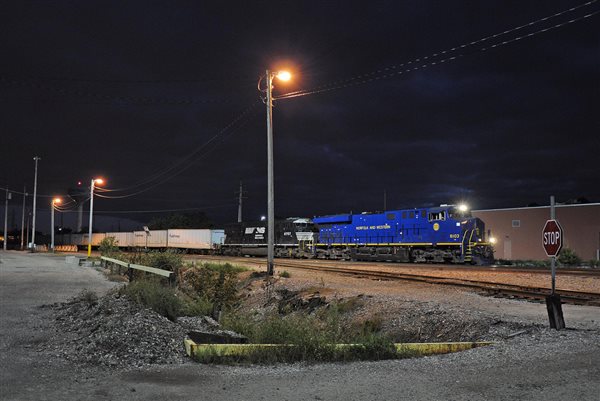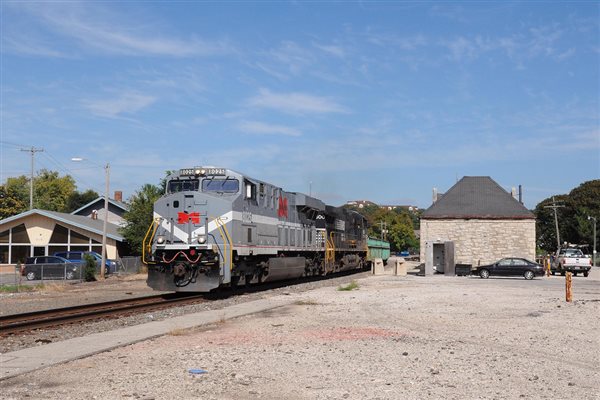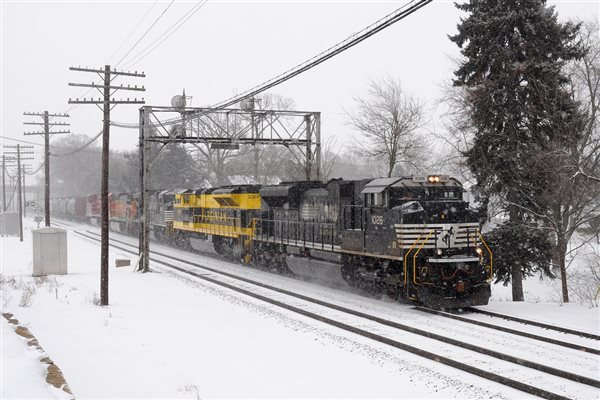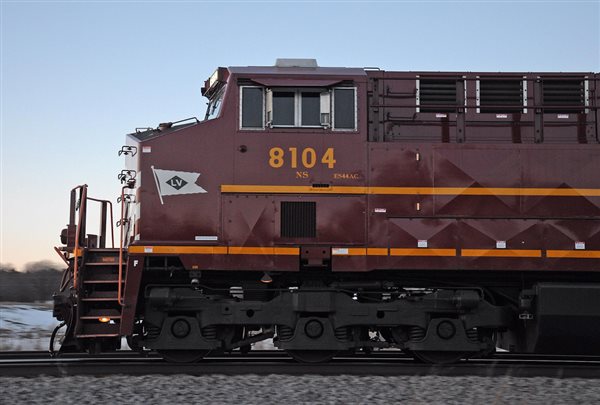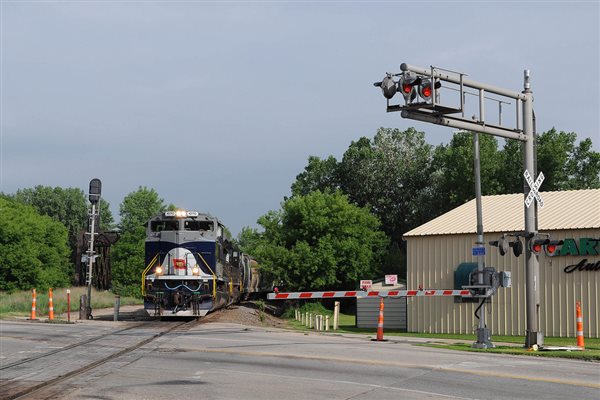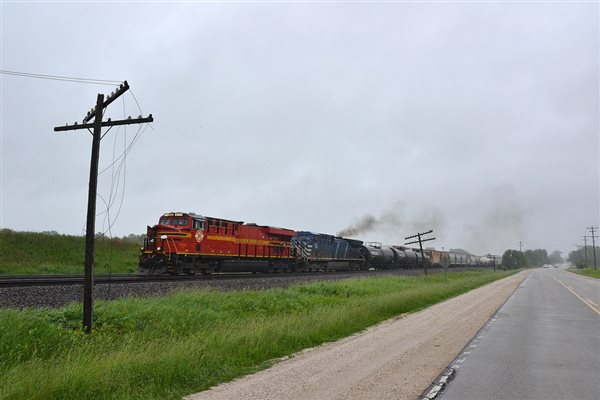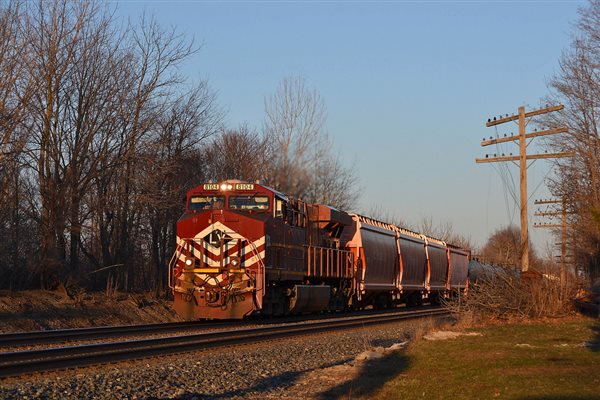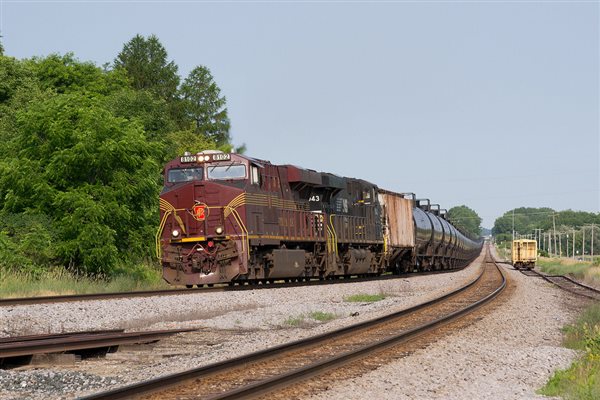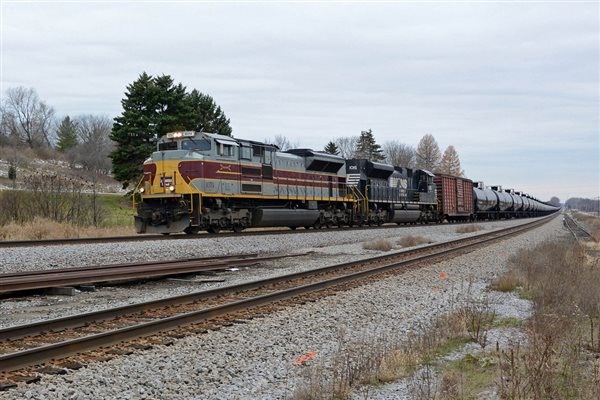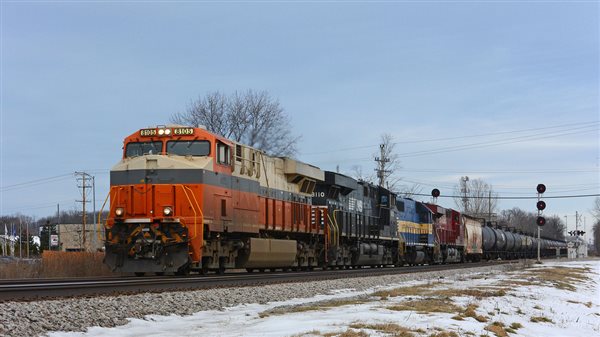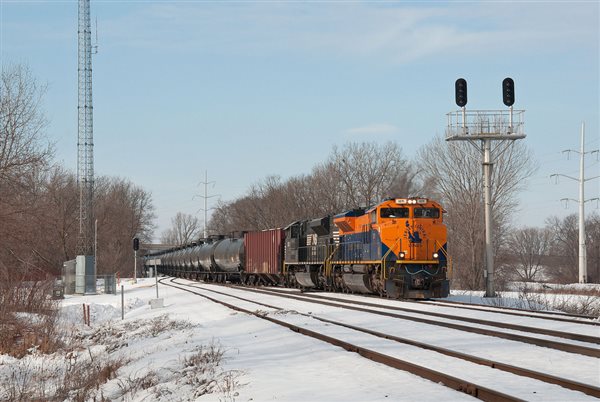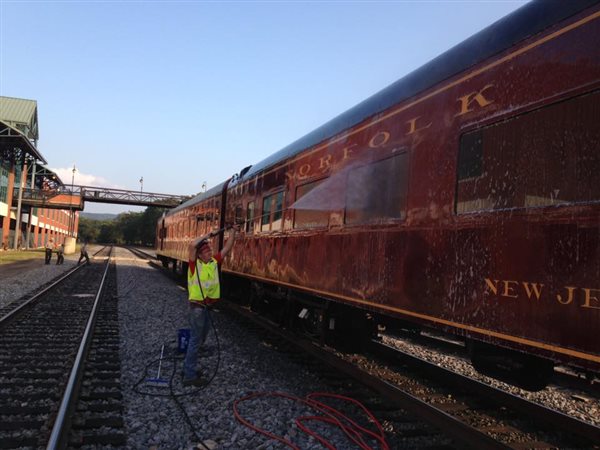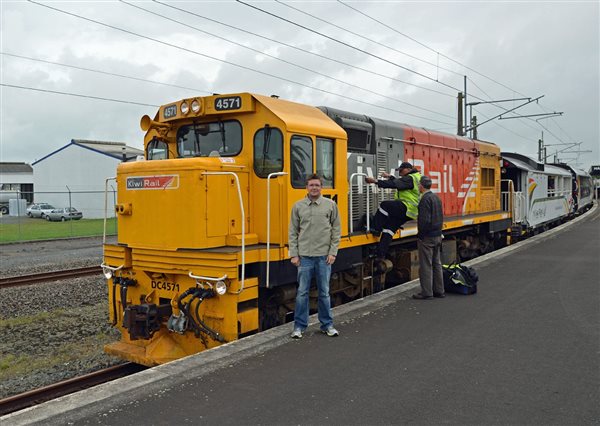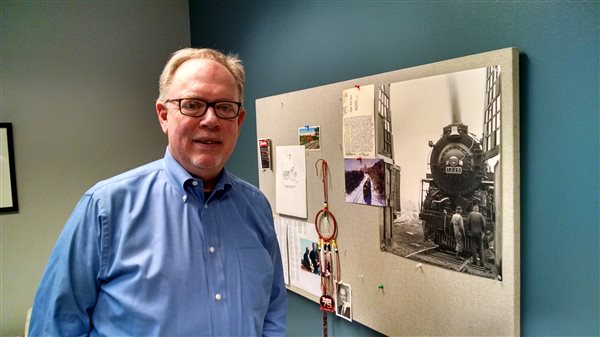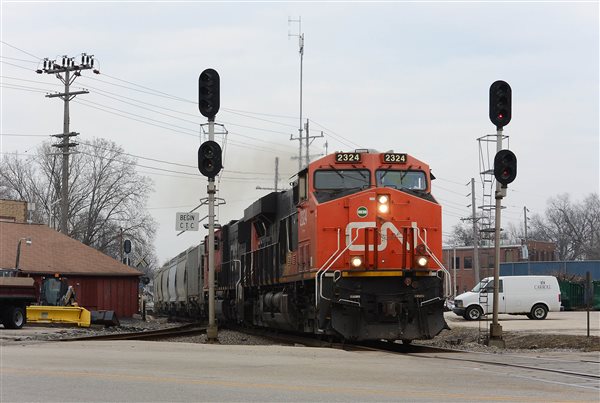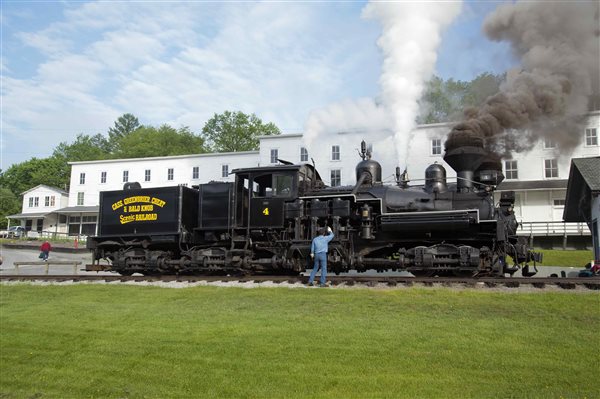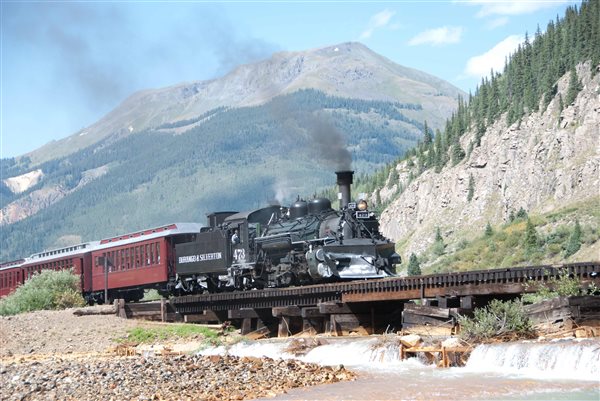The train-watching hobby community has made the sighting of the Norfolk Southern and other heritage units into a game of sorts. Railfans, it seems, are always trying to best each other with who has seen more, or who has seen a particular unit on "home" rails. (Nevermind that none of these units actually turned a wheel for the railroads they are painted for.) Now I've never really put much effort into tracking them down, but if the opportunity presents itself I will usually make the effort to go see one. By my count I can claim to have photographed 14 and seen a total of 17. Not bad for someone who – since 2012 – does not live in a state that NS serves.
Be sure to share your experiences – and locomotive counts! – in the comments for other visitors here.
The first Norfolk Southern heritage unit I photographed was No. 1073 at National Train Day in Toledo, Ohio, in May 2013. The locomotive led CSX and BNSF units on an eastbound NS crude oil train.
The second NS heritage unit I photographed was just a week later at National Train Day in Chicago. The locomotive was on display with Amtrak and Metra equipment in Chicago Union Station.
Next came SD70ACe No. 1072, the Illinois Terminal-painted unit, on an eastbound BNSF crude oil train during Rochelle Railroad Days in Illinois in June 2013. It was (unfortunately) trailing in the consist.
Just a month later, on another trip to northern Illinois, I saw No. 1074, the Delaware, Lackawanna & Western-painted unit, on a westbound empty BNSF tank train at Shabbona, just little ways southeast of Rochelle. While it was leading, the train came west about noon – just about the worst time to photograph a train in the summer sun. While I was glad to find a location with a landmark (the city water tower), I was less than thrilled with the lighting and resulting photo.
Another month brought me two more NS heritage units – back in Rochelle no less. On Aug. 31, 2013, I recorded both the red Norfolk Southern-painted and yellow Reading-painted unit on separate trains at the Rochelle Railroad Park.
Up next was ES44AC No. 8103, the Norfolk & Western-painted unit, on the eastbound RoadRailer train at Butler, Wis., in September 2013.
Let than a week later I would get to photograph the first NS heritage unit I ever saw: ES44AC No. 8025, painted for the Monongahela Railway. I first saw it in Cincinnati in August 2012, but wasn’t able to photograph it. So my consolation prize, more than a year later, was to shoot it passing the former Soo Line station in Waukesha.
The New Year brought me a new heritage unit: SD70ACe No. 1069 painted for the old Virginian Railway. Once again, I was at the Rochelle Railroad Park for the January 2014 catch that also included BNSF and Canadian Pacific power.
In March 2014 I was able to add ES44AC No. 8104, painted for the Lehigh Valley to my list. I was especially thankful for the longer days – and Daylight Saving Time – that enabled me to photograph this dinnertime move through Duplainville, Wis., on Canadian Pacific.
Sometimes you just get lucky. On a long drive home from Green Bay in June 2014, I was able to intercept northbound SD70ACe No. 1070, painted for the Wabash (my hometown road!), on Canadian National. I had a little warning from friends “down south,” so I was able to plan for a shot at Scott Street, where the tracks angle back west a bit, shedding a bit of nose light on the unit.
Also in June 2014, I recaptured No. 8114 northbound on Canadian National at Duplainville, Wis., on a dark and dreary late spring day.
In March 2015, I was able to make a Hail Mary shot at No. 8104 again on the former Conrail near Waterloo, Ind., while traveling east on assignment for the magazine.
In July 2015 I was able to add the might Pennsylvania Railroad to my list of heritage units when ES44AC No. 8102 lead an eastbound Canadian Pacific crude oil train through Brookfield, Wis.
Thankfully, I was able to get another shot at (no pun intended) No. 1074 when it led an eastbound CP crude oil train through Brookfield in November 2015.
In January 2016, I added Interstate-painted ES44AC No. 8105 on a westbound empty CP crude oil train at Duplainville, Wis.
Just this past weekend I added another: Central of New Jersey-painted SD70ACe No. 1071 on an eastbound CP crude oil train at Portage, Wis.
Three more units that I’ve seen but have not photographed include No. 8099, painted for the Southern Railway; No. 1066, painted for the New York Central; and No. 8101, painted for the Central of Georgia.
